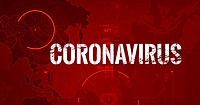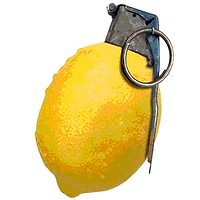No matter where in the world an influenza pandemic starts, the U.S. food supply will be impacted very quickly, and the repercussions to the industry could be severe and long-lasting. I recently moderated a roundtable discussion where professionals from six top food service and agriculture companies discussed the intricacies of pandemic planning. Based on the discussion, it’s clear that executives in the food industry are engaged in pandemic preparedness. This paper will address the current threat and the rationale for planning; how the food and agriculture industry could be affected by an influenza pandemic; and a strategic approach to planning. We begin with putting the pandemic threat in perspective.
Defining the Threat
Whether it’s a widespread Salmonella outbreak, a debate about food versus biofuels, or a struggling economy’s drain on retail sales, today’s food safety professionals have no shortage of pressing concerns with which to contend. As a result, preparing for an influenza pandemic may not be at the top of the priority list, but according to world health experts, it should be.
A flu pandemic occurs when a novel strain of influenza that humans have never before been exposed to spreads efficiently through the population, eventually infecting people worldwide. Three pandemics have occurred in the past century, and health officials continue to emphasize that the risk of the next pandemic remains real. In a Reuters article about a United Nations (UN) news conference in June of this year, David Nabarro, the UN’s influenza coordinator, was quoted as saying that the threat of a pandemic had not receded: "We are anticipating that there will be another pandemic at some time…the probability is still there and it hasn’t changed."
Earlier this year, Michael Leavitt, Secretary of the U.S. Department of Health and Human Services (HHS), stated in Pandemic Update V, available on PandemicFlu.gov, that "the media buzz has died down, but the ’bird flu’ virus has not." The H5N1 avian flu virus, which is considered by health experts to be the most likely culprit of the next pandemic, continues to spread and become entrenched in bird populations in more countries. According to the World Health Organization (WHO), there have been 385 human cases of H5N1 since 2003, 243 of them fatal. Five countries have also documented human-to-human transmission—in other words, a human infecting another human with the deadly H5N1 virus.
How the Food Industry Will be Affected
Once a pandemic begins, the nation’s entire food supply chain will be hugely disrupted—everything from manufacturing to packaging to retailing. The availability of goods will be unpredictable, and in the worst-case scenario, some products may be completely unavailable. The transportation industry will be grappling with problems of its own during a pandemic. Most notably, keeping enough healthy drivers on the road will be an ongoing struggle, meaning shipments and deliveries of goods could be delayed. In addition, borders will most likely shut down, leading to travel restrictions. The end result will be major complications in the flow of goods.
Companies operating in the food industry should also prepare for distinct changes in consumer habits. Retailers will notice that some items will be in very high demand (i.e., bottled water, non-perishable foods), while demand for other products, like chicken, may decrease. Consumers are likely to change their shopping patterns in an effort to protect themselves and their families. Pandemics typically occur in two or three waves and last six to eight weeks each, so retailers should prepare for surges in demand as consumers attempt to stockpile and purchase larger quantities of products in fewer visits. It will be not unlike the clearing of shelves that’s often seen just before a severe snow storm or hurricane hits, except magnified and spread across a far broader swath of the country. A pandemic is also likely to cause a soaring demand for online shopping and home delivery as consumers travel less often to "brick and mortar" stores, either because of mandated quarantines from the government or "self-quarantining" of individuals.
These issues will only intensify as the pandemic continues, which could be as long as 12—18 months. Despite the obstacles that a flu pandemic will create, food retailers will still be expected to operate essential services and meet government and community obligations throughout a pandemic.
Considering all of the turmoil that a flu pandemic will likely cause, it’s not surprising that it will also have a direct impact on the global economy. The non-profit Trust for America’s Health (TFAH) released a report last year finding that a severe flu pandemic could result in the second-worst recession in the United States since World War II. The U.S. Gross Domestic Product (GDP) could drop more than 5.5%, leading to an estimated $683 billion loss. The report cited specific implications for the food services industry, finding that it could experience an 80% decrease in consumer demand, leading to $67.6 billion in GDP losses for the food and accommodations industry. The agriculture industry would also be affected, though not as severely—a 10% drop in consumer demand and $2.9 billion in GDP losses.
The good news for food industry professionals is that by taking concrete steps now, the overall health of individual companies and the entire industry can be significantly strengthened in advance of a pandemic.
The Pillars of Employee Protection
The food industry is a people-intensive business. Employees are the backbone of the business and the driver of all revenue. Without adequate plans to protect the health and well-being of their workforce during a pandemic, companies are at risk for major problems associated with absenteeism and may even risk closure or bankruptcy.
The best employee protection plans are built upon five distinct pillars, the first being education. To ensure that employees trust them as a valid and reliable source of information before, during and after a pandemic, employers must dedicate appropriate resources to develop education materials that address such topics as hygiene practices, the importance of staying home when sick and methods to avoid contracting the virus. In the food industry, hand hygiene through frequent and thorough hand washing as well as proper cough protocols (i.e., coughing into the sleeve rather than the hands) should be the core components of a solid education program.
The second pillar is personal protective equipment (PPE), which includes items like face masks and respirators that can prevent others from contracting the virus. PPE may be particularly important for the food retail sector since employees are often in close contact with each other and the public. PPE is recommended in areas where staff members are not able to be separated from others by at least six feet, such as at cash registers and customer service areas.
The next pillar is facility cleaning. Customers will judge food retailers primarily by what they see when they enter a store. While companies typically don’t clean during business hours, they may want to reconsider that during a pandemic. Customers will want to see that companies are making hygiene and safety at the facility a top priority. If they see store employees performing additional cleaning measures, it will help to ease their minds about shopping at that particular store. Food retailers should pay special attention to "high-touch" areas such as the check-out lines, shopping carts, point-of-sale credit card machines, cash registers, bathrooms, etc.
Social distancing is the fourth pillar and encompasses all tactics that can create physical space between people—employees, vendors and customers. Some options include providing alternate work locations, staggering work schedules, closing company common areas (i.e., gyms, cafeterias), and limiting face-to-face meetings. Food retail businesses will need to pay special attention to their employees who must interact frequently and more closely with customers or co-workers during a pandemic. As mentioned earlier, these employees should be provided with surgical masks and other PPE.
Pharmaceutical interventions represent the final pillar of solid employee protection planning. When a pandemic strikes, antivirals will be a key line of defense until an effective vaccine can be developed and distributed, which experts estimate will take at least five months. Because antivirals need to be taken within 12 to 48 hours of illness onset, stockpiling them is necessary for advance positioning, according to the WHO. Even though federal and state governments have built stockpiles, they will cover only 25% of the population, with much of that going to a pre-established priority distribution list.
In June 2008, HHS issued proposed guidance encouraging U.S. businesses to consider stockpiling antiviral medications as part of pandemic preparedness plans. Some companies have chosen to provide antiviral medications to all employees in advance of a pandemic, while others have purchased medications for those employees that have been identified as "critical work staff" during a pandemic. A flexible corporate purchase program introduced in June 2008 by Roche, the maker of the antiviral medication Tamiflu, now allows U.S. businesses to gain access to their own stockpile of Tamiflu for a nominal annual fee. Roche will maintain and store the stockpile until the company is ready to take ownership.
Supply Chain Management
Of all the business continuity issues facing companies in the food industry, managing the supply chain may be the most challenging. It is essential that companies assess the mission-critical supply chain components and analyze how they would be impacted during a pandemic. As part of this process, companies should identify minimum inventories required for critical products, determine which products to stock more or less of and collaborate with suppliers and vendors to exchange information and discuss pandemic plans.
Food manufacturers will need to take a close look at the products they produce and make some difficult decisions about what they can realistically provide to customers during a pandemic, given the expected disruptions in the supply chain. This process can be implemented by revisiting their product mix and narrowing production down to a smaller, more manageable list of pre-identified foodstuffs. Retail companies should identify basic goods and increase their inventory of staples that all families are likely to need and use throughout a pandemic.
The supply chain is only as strong as its weakest link, so it’s crucial for companies to open a dialogue with suppliers to understand how they plan to maintain operations throughout a pandemic. These conversations can serve as the perfect opportunity to be sure suppliers are aware of what will be needed of them during a pandemic. It’s possible that a business may decide to approach new vendors if a current vendor’s pandemic planning is not at an appropriate level.
Lastly, security may be an issue during a pandemic. Food manufacturers and retailers will need to work closely with government agencies (state and local) to ensure that products will be delivered safely to store shelves. If deliveries become dangerous, drivers will be less likely to report to work, further worsening a potentially challenging situation.
Keeping Food on the Shelves: It All Comes Down to Planning
When the dust settles after a pandemic hits, the food industry and individual businesses will be judged on how they conducted operations during the pandemic. Without adequate planning, the odds of a company being judged favorably by its employees, customers and other external stakeholders are greatly reduced.
While a pandemic is inevitable, time is on our side, as Secretary Leavitt noted earlier this year: "There is simply no reason to believe that this century will be different than any past century. The difference now is that we better understand the threat, so we can increase our preparedness for a pandemic before it comes, in order to diminish its potential impact."
Regina Phelps, CEM, RN, BSN, MPA, is an internationally recognized expert in the field of emergency management and continuity planning, assisting more than 150 companies in developing domestic and global pandemic plans. Ms. Phelps is the founder of Emergency Management & Safety Solutions (EMSS), a consulting company specializing in emergency management, continuity planning and safety. She can be contacted via www.ems-solutionsinc.com.
Pandemic Flu and the U.S. Food Industry




